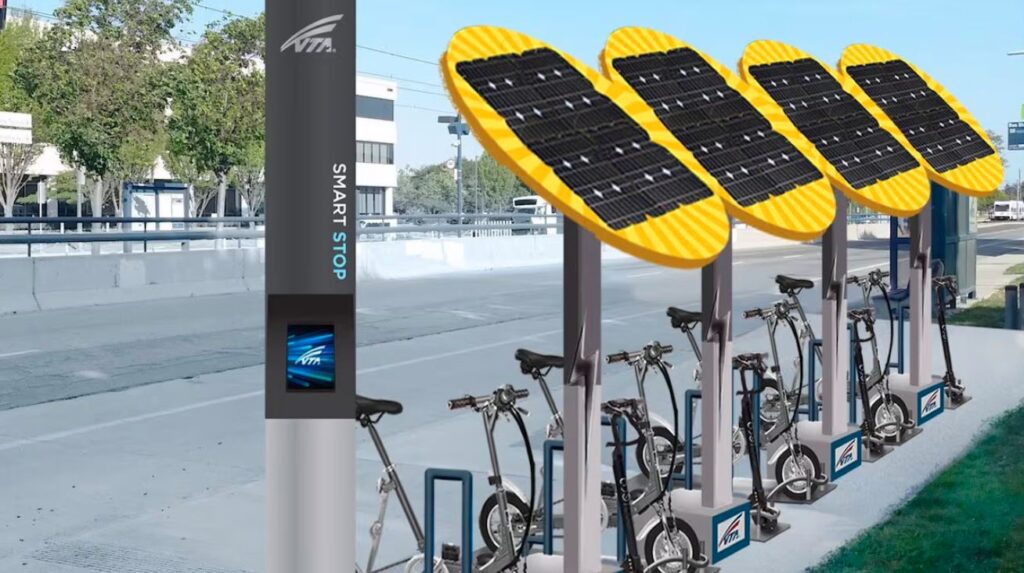Powering the Urban Mobility Revolution
The rapid rise of electric bicycles (e-bikes) is transforming urban transportation, offering a sustainable, cost-effective, and efficient alternative to traditional vehicles. As cities worldwide grapple with traffic congestion, air pollution, and the urgent need to reduce carbon emissions, e-bike charging infrastructure in cities 2025 is emerging as a critical component of modern urban planning. This article explores the current state, challenges, and future prospects of e-bike charging infrastructure, highlighting innovative solutions and global trends shaping the mobility landscape.
The Rise of E-Bikes in Urban Mobility
E-bikes have surged in popularity due to their ability to cover longer distances with less effort compared to traditional bicycles, making them a viable substitute for cars and public transit for short to medium trips. In 2025, the global e-bike market is valued at over $40 billion, with projections indicating continued growth as urban residents embrace e-bikes for commuting, delivery services, and leisure. This boom has placed significant pressure on cities to develop robust e-bike charging infrastructure in cities 2025 to support this growing demand.
Environmental and Economic Benefits
E-bikes offer substantial environmental benefits, producing zero tailpipe emissions and reducing reliance on fossil fuel-powered vehicles. A single e-bike can cut approximately 225 kilograms of CO₂ emissions annually, making them a powerful tool for combating urban air pollution. Economically, e-bikes are far more affordable than cars, with annual charging costs averaging just $21 compared to $2,635 for gasoline in the United States.
These benefits underscore the need for accessible e-bike charging infrastructure in cities 2025 to maximize adoption and impact.

Growing Demand for Infrastructure
The surge in e-bike usage, particularly in densely populated urban areas like New York City and San Francisco, has highlighted the need for reliable charging solutions. Shared e-bike programs, such as New York City’s Citi Bike, reported over seven million e-bike trips in 2025, with a single-day record of 130,709 rides.
To meet this demand, cities are prioritizing the expansion of e-bike charging infrastructure in cities 2025, integrating charging stations into public spaces and bikeshare systems to ensure bikes remain powered and available.
Current State of E-Bike Charging Infrastructure
In 2025, e-bike charging infrastructure in cities 2025 varies widely across regions, with some cities leading the way while others face significant gaps. China, Europe, and parts of North America are at the forefront, driven by supportive policies, technological advancements, and urban planning initiatives.
Global Leaders in E-Bike Charging
China dominates the global landscape for electric vehicle supply equipment (EVSE), including e-bike charging stations, with over 85% of the world’s fast chargers. Cities like Beijing and Chongqing are deploying thousands of ultra-fast chargers by the end of 2025, integrating them into both urban and rural areas.
In Europe, the European Union’s Alternative Fuels Infrastructure Regulation (AFIR) aims to install one million public charging stations for electric vehicles, including e-bikes, by 2025, with a focus on dockless and fast-charging solutions.
Innovations in Charging Technology
Advancements in charging technology are making e-bike charging infrastructure in cities 2025 more efficient and user-friendly. Fast-charging systems, wireless charging, and IoT-enabled stations are becoming more common.
Dockless charging stations, which allow users to charge e-bikes anywhere via mobile apps, are gaining traction in smart city projects. These stations use IoT connectivity for real-time monitoring, improving user experience by providing updates on availability and location.
Additionally, SMPS-based DC-DC converters are ensuring optimal battery performance, improving energy efficiency and extending battery life.
Case Study: New York City’s Citi Bike Program
New York City’s Citi Bike program exemplifies how e-bike charging infrastructure in cities 2025 can be integrated into bikeshare systems. The city launched its first electrified charging station at Ninth Avenue and West 35th Street, allowing e-bikes to charge while docked.
This system minimizes manual battery swaps and improves the overall availability of bikes. With plans to scale this across all boroughs, NYC offers a model for global cities aiming to support e-bike adoption through integrated infrastructure.
Challenges Facing E-Bike Charging Infrastructure
Despite progress, several challenges hinder the widespread adoption of e-bike charging infrastructure in cities 2025. Addressing these barriers is essential for ensuring equitable access and sustainable urban transportation.
Inadequate Infrastructure and Accessibility
Many cities lack sufficient charging stations, especially in low-income and suburban areas, leading to “range anxiety” among riders. In high-density locations like Hong Kong, space limitations and the lack of standardized charging protocols complicate infrastructure rollout.
Moreover, installation and maintenance costs can be prohibitive for municipalities, particularly where government subsidies are limited or absent.
Safety and Regulatory Concerns
Safety remains a concern, especially surrounding lithium-ion battery fires. In 2023, NYC reported 267 battery-related fires, causing 150 injuries and 18 deaths. These events stress the importance of regulations for battery quality, user education, and proper charging practices.
Additionally, inconsistent local regulations—ranging from helmet mandates to varying speed limits—hinder cohesive infrastructure planning and create confusion for users.
Affordability and Equity
Although e-bikes are more cost-effective than cars, the initial purchase cost remains high for many low-income residents. Cities such as Rio de Janeiro and São Paulo have experienced slower uptake due to affordability issues, despite growing bikeshare networks.
Ensuring equitable access to charging stations—particularly for gig workers and delivery riders—is a key step toward inclusive mobility.
Strategies for Expanding E-Bike Charging Infrastructure
To overcome these challenges, cities are implementing innovative strategies to scale e-bike charging infrastructure in cities 2025, spanning policy, technology, and public engagement.
Government Policies and Incentives
Public policy plays a pivotal role. Several European nations are offering subsidies covering up to 80% of charging station installation costs. In the U.S., federal funding is supporting the rollout of public e-bike charging stations, while cities like Denver have implemented highly successful e-bike rebate programs, distributing over 4,700 e-bikes in 2022.
The Institute for Transportation and Development Policy (ITDP) recommends integrating e-bikes into national electrification and climate action plans to drive infrastructure investment and policy alignment.
Public-Private Partnerships
Collaborations between government entities and private firms are accelerating infrastructure development. Companies like ChargePoint and Electrify America are teaming up to install e-bike chargers at retail and transit locations.
Shell, traditionally an oil company, is expanding its EV footprint to include e-bike charging at fuel stations, leveraging existing real estate to reduce overhead and broaden accessibility.
Integrating with Public Transit
Co-locating e-bike charging hubs with public transit nodes encourages multimodal transportation. For example, Kunming, China, is integrating e-bikes with subway and bus systems, facilitating seamless first- and last-mile travel.
This approach reduces private vehicle use and increases e-bike utilization, particularly in high-density zones.
Smart City Integration
IoT, AI, and big data are transforming e-bike charging infrastructure in cities 2025. Smart charging hubs offer real-time diagnostics, usage tracking, and predictive maintenance.
In Dublin, data-driven evaluations have shown that optimized infrastructure planning using data envelopment analysis (DEA) significantly boosts both ridership and environmental performance.
Cities are also using tools like the National Renewable Energy Laboratory’s (NREL) OpenPATH platform to monitor urban mobility patterns and optimize infrastructure investments accordingly.
The Future of E-Bike Charging Infrastructure
The global e-bike charging station market is projected to reach $3.71 billion by 2034, growing at a CAGR of 12.52%. The future of e-bike charging infrastructure in cities 2025 will be shaped by new technologies, regulatory alignment, and continued urban demand.
Wireless and Fast-Charging Innovations
Wireless charging systems and ultra-fast chargers are becoming more viable for public spaces. These technologies eliminate cables, reduce charging time, and make installations more scalable.
Companies like Bosch are pioneering dockless, solar-powered charging stations, particularly suited for rural or mountainous areas with limited grid access.
Battery Swapping Networks
Battery swapping stations offer a convenient alternative to traditional charging. Gogoro, based in Chinese Taipei, operates over 12,000 battery swapping stations servicing 500,000 vehicles, with more than 300 battery swaps per day.
Cities exploring rapid scalability may adopt this model to address congestion and downtime issues.
Sustainable Urban Planning
Modern urban planning is emphasizing compact, bike-friendly designs. Integrated networks of protected bike lanes, smart charging hubs, and zoning incentives are being built into development blueprints.
This holistic approach ensures e-bikes are a natural part of daily commutes, leisure rides, and logistics services, enabling truly sustainable urban ecosystems.
Conclusion
The expansion of e-bike charging infrastructure in cities 2025 is a cornerstone of the global urban mobility revolution. By addressing infrastructure gaps, enhancing safety standards, and ensuring equitable access, cities can fully harness the environmental, economic, and social benefits of e-bikes.
Governments, businesses, and citizens must work together to develop scalable, inclusive, and technologically advanced solutions. To see the broader environmental and financial impact of switching to e-bikes, explore RMI’s Electric Bike Calculator.
As we look ahead to 2030, the continued evolution of e-bike charging infrastructure in cities 2025 will be critical to creating greener, more connected, and more resilient urban communities.



